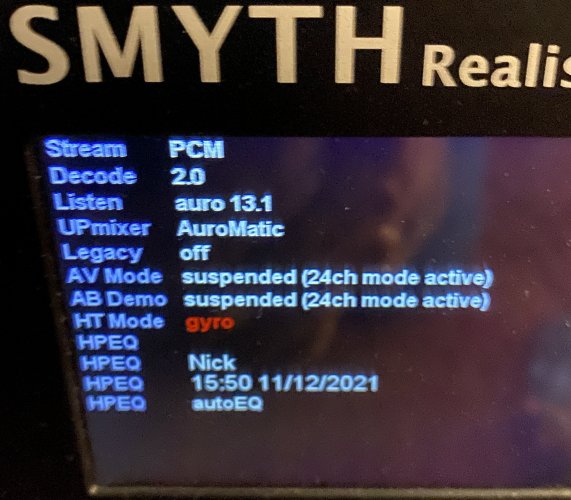Hey guys,
you don't have to wait for the asynchronous mode to be implemented (at least for up to 8 speakers)! Just record the measurement signal, save it as multichannel wav or flac and play it back on your streaming device or blu-ray player.
I've done this when I received my Realiser last month. If you have a legacy 5.1 system, you can use my recording:
https://www.dropbox.com/s/k42hj391gwq2w8c/SMYTH Realiser - 5.1 Longsweep 30deg.flac?dl=0
Just go to PRIR measurements, press SPK, play back the file and press the SPK-button when the playback hits the 3 second mark.
You must use the 12 sec non-overlapping routine with one look-angle at 30 deg, HT assist must be turned off. The LFE signal is -10dB, so you have to switch hp LFE +10dB on afterwards (Listening rooms / manage bass)
you don't have to wait for the asynchronous mode to be implemented (at least for up to 8 speakers)! Just record the measurement signal, save it as multichannel wav or flac and play it back on your streaming device or blu-ray player.
I've done this when I received my Realiser last month. If you have a legacy 5.1 system, you can use my recording:
https://www.dropbox.com/s/k42hj391gwq2w8c/SMYTH Realiser - 5.1 Longsweep 30deg.flac?dl=0
Just go to PRIR measurements, press SPK, play back the file and press the SPK-button when the playback hits the 3 second mark.
You must use the 12 sec non-overlapping routine with one look-angle at 30 deg, HT assist must be turned off. The LFE signal is -10dB, so you have to switch hp LFE +10dB on afterwards (Listening rooms / manage bass)











